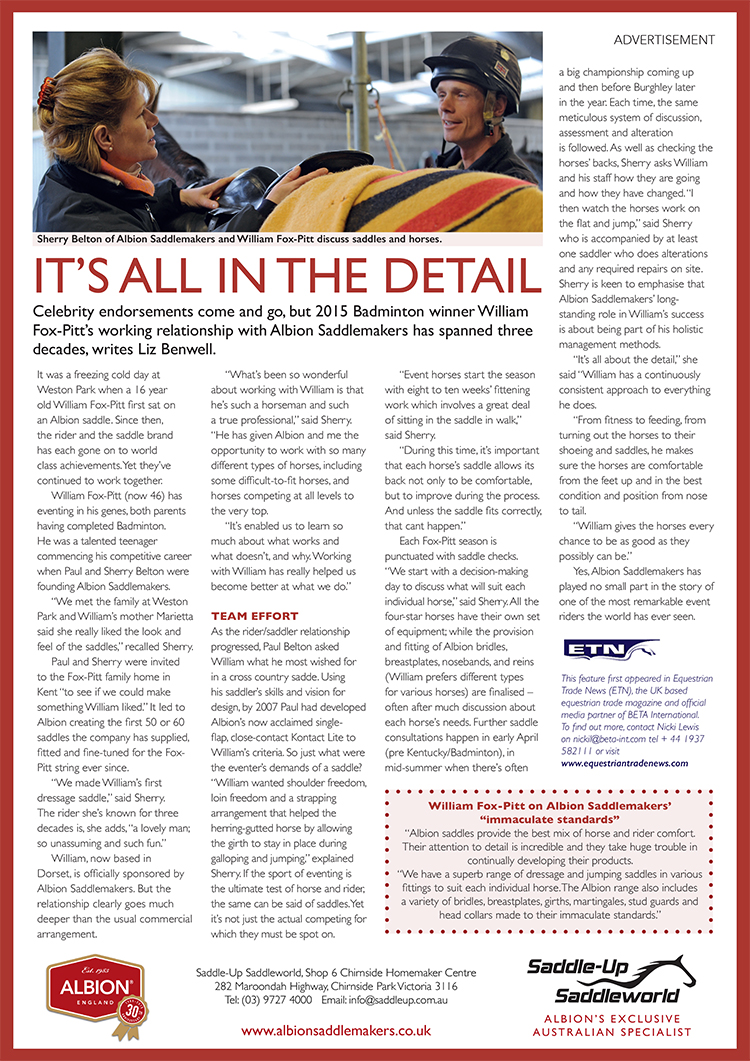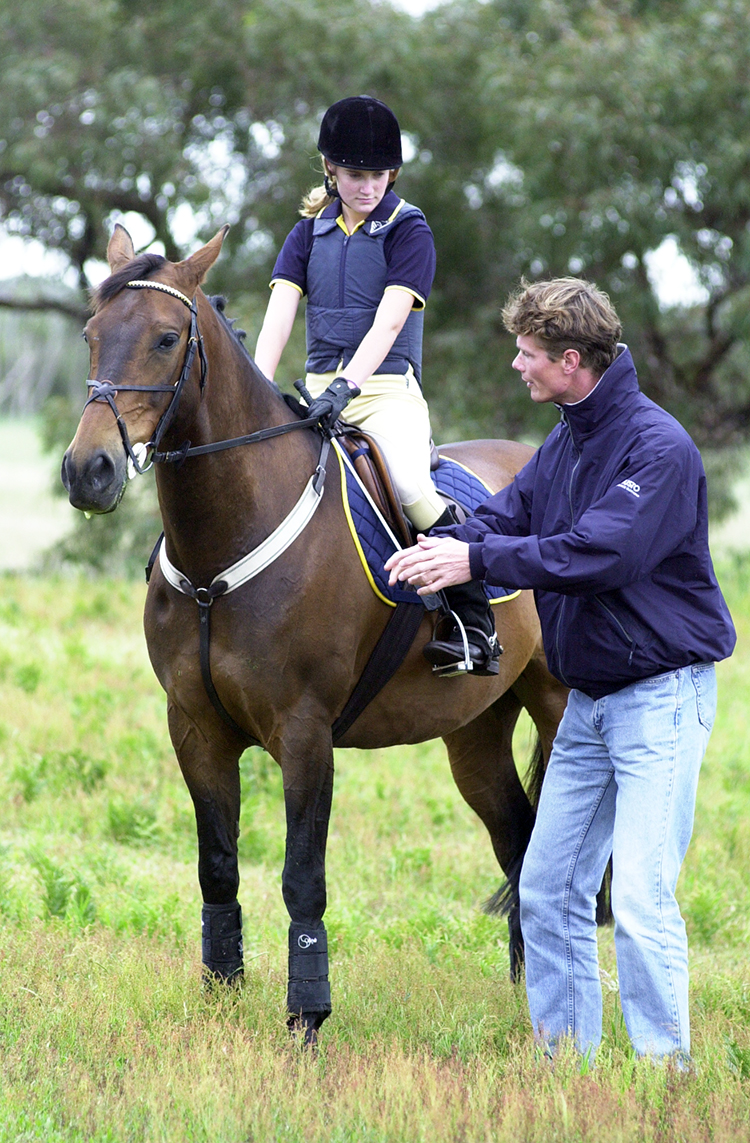 Words by Chris Hector and photos by Roz Neave
Words by Chris Hector and photos by Roz Neave
William Fox-Pitt is tall, handsome, well-spoken and witty with a great sense of fun. He is also one of the world’s top eventing riders, having competed in a series of British teams, winning many medals.
Lucy Bowen is fourteen years old and she is at the other end of the eventing spectrum from William, she is taking those first steps along the Horse Trials road. Her horse, the ten year old part Andalusian, Andiamo of Coolalee, is somewhere in between. He was a school horse at the NSW Equestrian Centre where he competed in a few Preliminary One Day Events. He and Lucy have been together for just on a year, and in that time, they’ve tried it all, a bit of eventing, a bit of showjumping and a little dressage.
“He can get a bit cheeky jumping but when he is in a good mood, he is very good.”
Poor Lucy didn’t know what to expect from the visiting trainer, but was happy enough with the result…
“I didn’t know what to expect because I’d never had a lesson with William before. I got a lot out of it. He says basically what other instructors have told me but in a clearer way.”
And William? He’s a cool dude and a thorough professional when it comes to this instructing business. Wisely he let his student spend a little time doing her own thing as he analysed where he could be of assistance.
“I like any pupil to spend five minutes getting relaxed in their own way, before I start interfering. I just want to get a feel for how she and the horse get on, how they go together, before I start putting any ideas to her. I think it is important that they are relaxed and ride in their own way to begin with. I don’t want to change anyone’s style, I want to get a feel for the partnership before I start offering advice.”
As is the case with all the really good instructors, there is nothing wildly different in William’s analysis, and his program is equally simple, straight-forward and uncomplicated:
“I’d like to work a little on lines and give you my ideas as to how I would bring on a young or inexperienced horse during cross country training. Right from the beginning it is quite important that you have a nice connection from your leg – a secure lower leg into a nice hand and an even contact on both reins. I know that sounds quite basic but that can often be quite hard to achieve, a lot of horses are one sided – they fall out through one shoulder. Particularly with a spooky horse, it is very important that you have him nicely connected from the leg into the rein. When they spook, it is very easy to loosen the rein, then you have lost direction, lost the control and the connection.”
“That’s what we’ll be working on. If you feel him spook, don’t flap the rein, don’t lose the contact into his mouth because as soon as they do that a less experienced horse will lose confidence and draw back even more behind your leg.”
“I’ve ridden a lot of spooky horses and they do tend to make you want to kick and let go of the front end. I’m not saying pull back with the rein, but give him the security of the rein, to give him that confidence.”
William had been warned that at times, ‘Andy’ could take advantage of his young rider…
“It is very important with young or inexperienced horses, that they learn to jump first time, particularly with spooky horses that like to have a look when they see a new jump, it is important that they learn right from the start, that when you present to a fence, they have to have a go. It is important that they know they have done something wrong.”
“Right from the beginning, add a little discipline to your approach.”
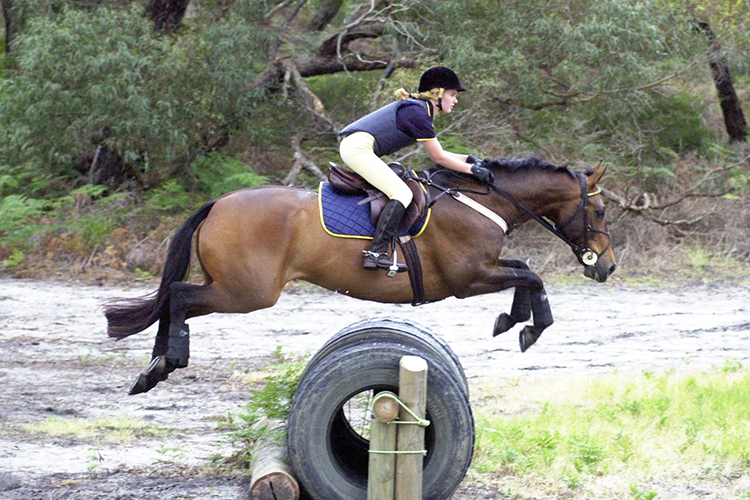
“Rider position is also important; sometimes you see inexperienced riders sitting in the saddle between the jumps. You should always be off the back in gallop, then when you get closer to the jump, different riders will have a different style. Some will stay out of the saddle and just ride with the leg, others will lower their seat into the saddle, but I believe it is very important that you don’t come too far back with your shoulders and put your balance behind the horse. So when you come down from a gallop into what I call an approach position, that you basically lower yourself into the saddle, keeping your shoulders slightly in front of the hip. Then if you have to adopt a safety position if something happens – or adopt a positive riding position, then the shoulders can come back more, but I think the shoulders should be soft and slightly more in front of the vertical than you would be in the showjumping arena or the dressage arena. It’s very important that you are not in the saddle between the jumps, that you give him the freedom to gallop across the country.”
With William’s encouragement, Lucy was quite firm as she pointed Andiamo at one of the big logs on the cross country course at Tooradin Park, and won praise for her effort!
“It was good you gave him a nice smack then. If you ever get that feeling that he is not quite in front of your leg and he is just looking at a fence too hard, don’t wait until it is too late. Don’t give them the benefit of the doubt – that way he’ll get a bit more respect for you and listen to your aids a little more sharply.”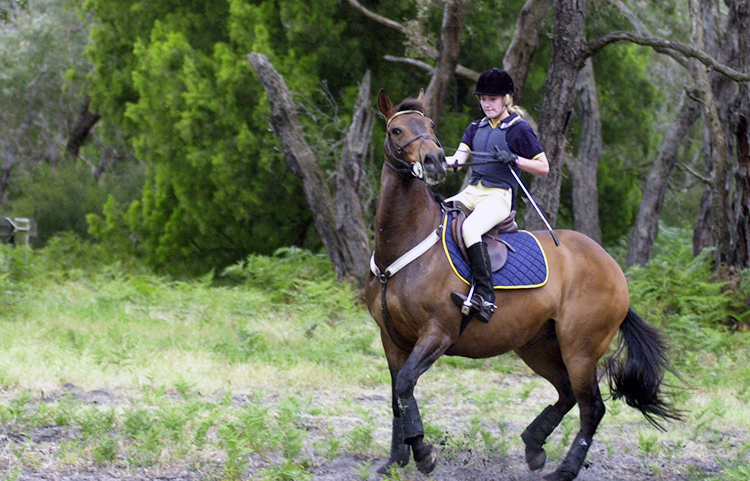
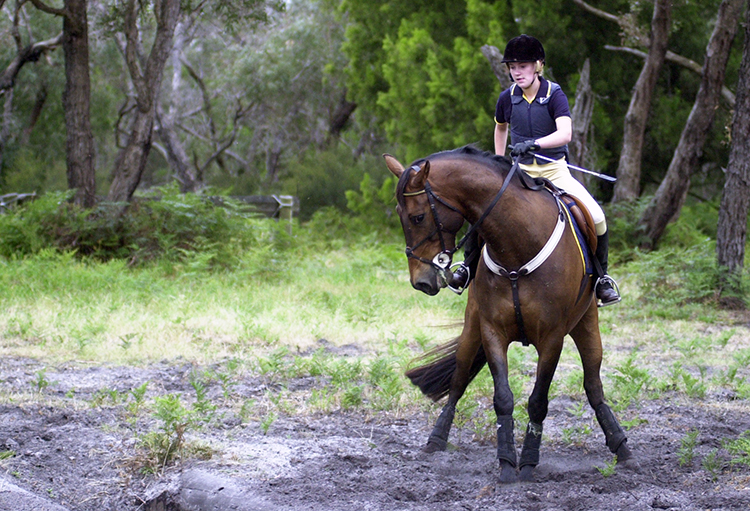
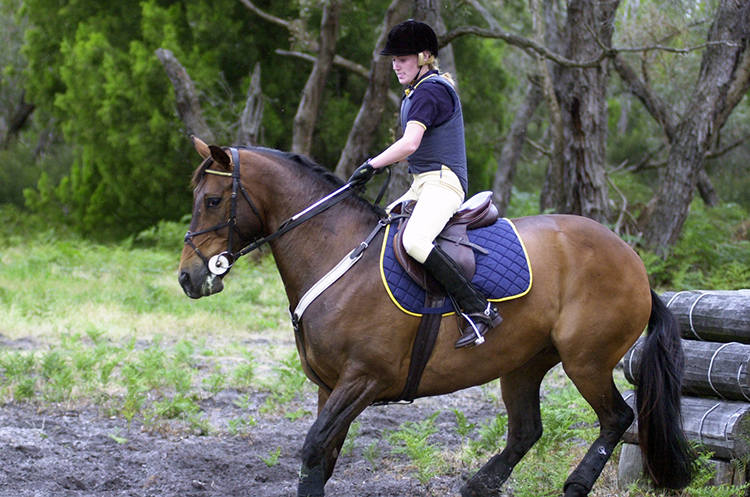
But at the next fence, Andy was too quick and stopped out. William once again was quick to analyse the situation:
“He is just expecting to have a first look at it. It is not that he is worried – he just comes in and says ‘oh, we’ll have another go’. To me he is not frightened, he is just a bit cheeky, and he has just got to learn that the first error is no longer acceptable. Sometimes when a horse stops at a fence, the second time he jumps it, he’ll jump it in a scared way, or in a green way an jump very large, whereas when Andy jumped it the second time, it was like he had jumped it ten times more. Sometimes if you are not quite thorough in your approach to the fence and not quite as committed as you need to be, you can give the horse the opportunity to stop. Now you see that he has jumped the fence twice from each direction, he has jumped it off all sorts of varying strides and has done it nicely. What did I say you should do if he has a stop?”
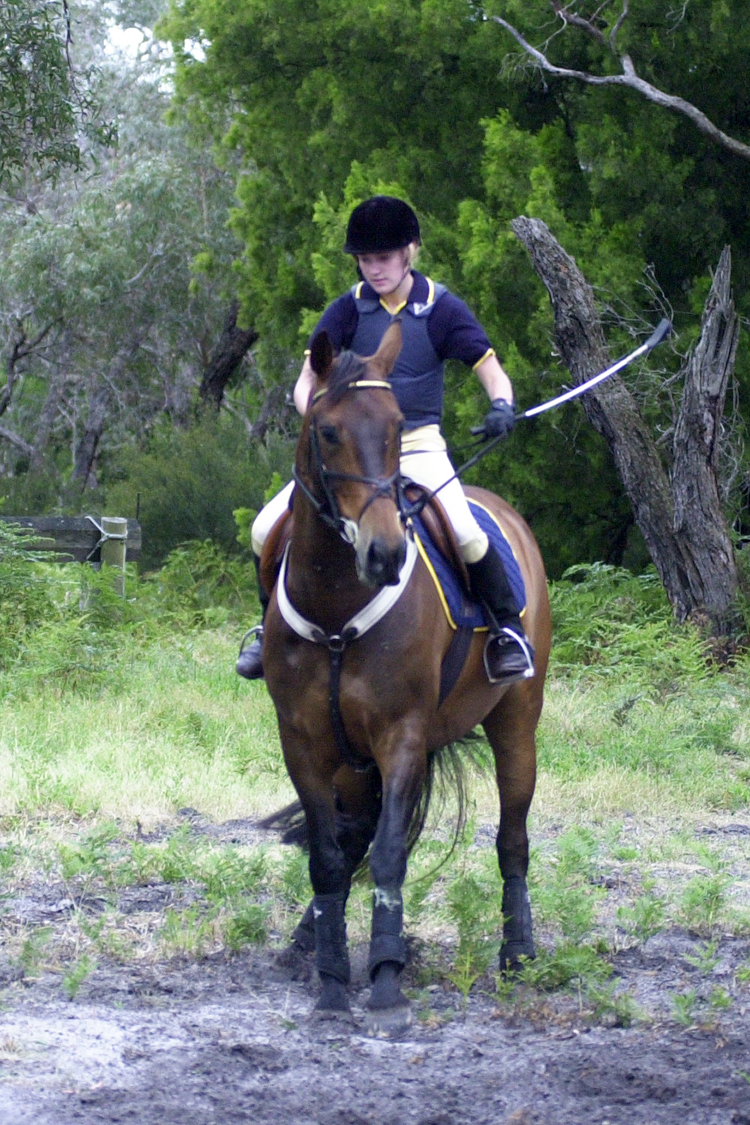
“Give him a big whack!”
“Did you? No, exactly. He could easily have jumped it the first time. I thought you could have been slightly straighter. I thought your approach was a little bit dreamy, you drifted down the corner a bit, and he said ‘oh dear, let’s have another go…’ That’s exactly what we were talking about. If he does it again, I really want you to tell him that you are not pleased. You’ve got to give him a much clearer indication of ‘there you are, there’s a fence, let’s jump it.’ And when he does it right, give him a pat so he knows he has done it well. Try approaching the jump in trot. When you canter in, he is too quick for you to correct, but at trot, the pace is slower and you can straighten him much more easily.”
This time the jump was okay, and it was the rider who was disciplined:
“That’s was good except you lost your balance ever so slightly, could you feel that? The security of the lower leg had gone. You are giving the horse plenty of freedom in the mouth, which I think is very important but if you had a fence coming up after it, you would have had to make a very big adjustment to regain your balance.”
The problem was compounded by the fact that the pair now had to jump down hill: “If you leave him alone going down hill, he will fall on to his forehand, so what I want you to do when you are going downhill is to just think of keeping the horse’s head up, just a little bit. Keep him off his forehand, keep his hocks engaged so he is not tipping forward and losing the balance so he is over the shoulders. Jump the fence on the flat in your normal way, which has been fine so far, as the ground starts to slope down, sit up, head up- your head this time – and ride him! With the drop down the hill open up your shoulders a bit more.”
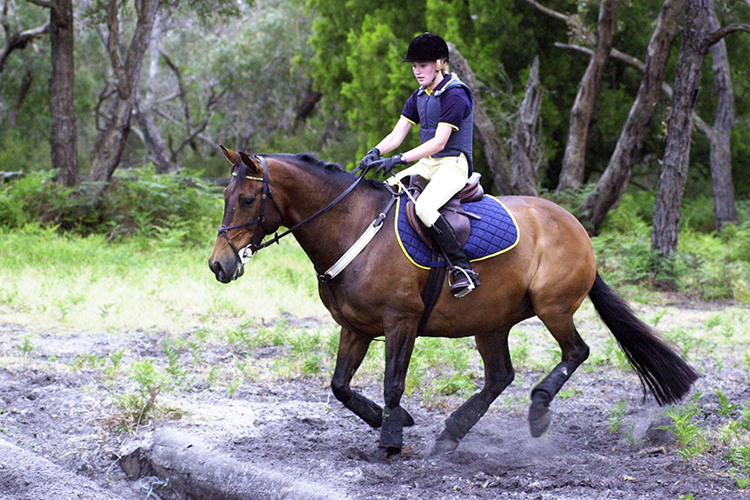
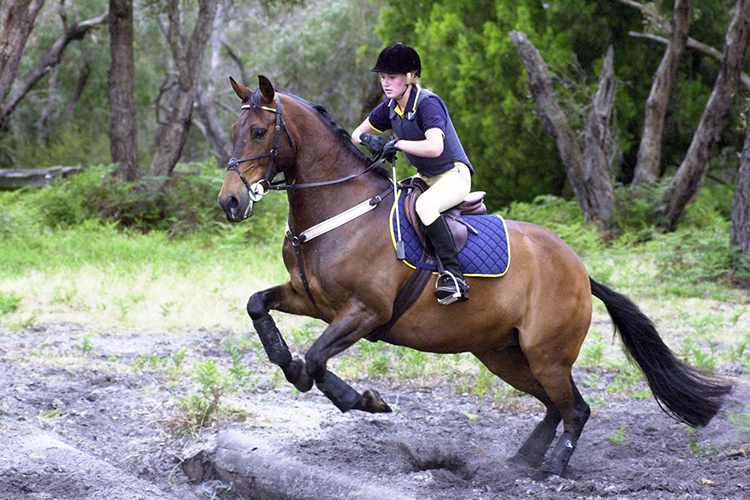 One of the great advantages of schooling at Tooradin is the water jump, which can be jumped a variety of ways. Again William was making sure that this was going to be a positive learning experience:
One of the great advantages of schooling at Tooradin is the water jump, which can be jumped a variety of ways. Again William was making sure that this was going to be a positive learning experience:
“We are just going to use the water as a schooling exercise. Building up from just getting his feet wet, walking in and out of the water the easy way, then we’ll go carefully so you don’t lose his confidence or take a step back and get worried about it. It’s repetition that helps build confidence. I want you to ride him into the water as if your life depended upon it. Always get into the habit- even if you don’t have to when you jump in, see how quickly you can slip the reins up. Test yourself a bit. Don’t just work on him, work on yourself.”
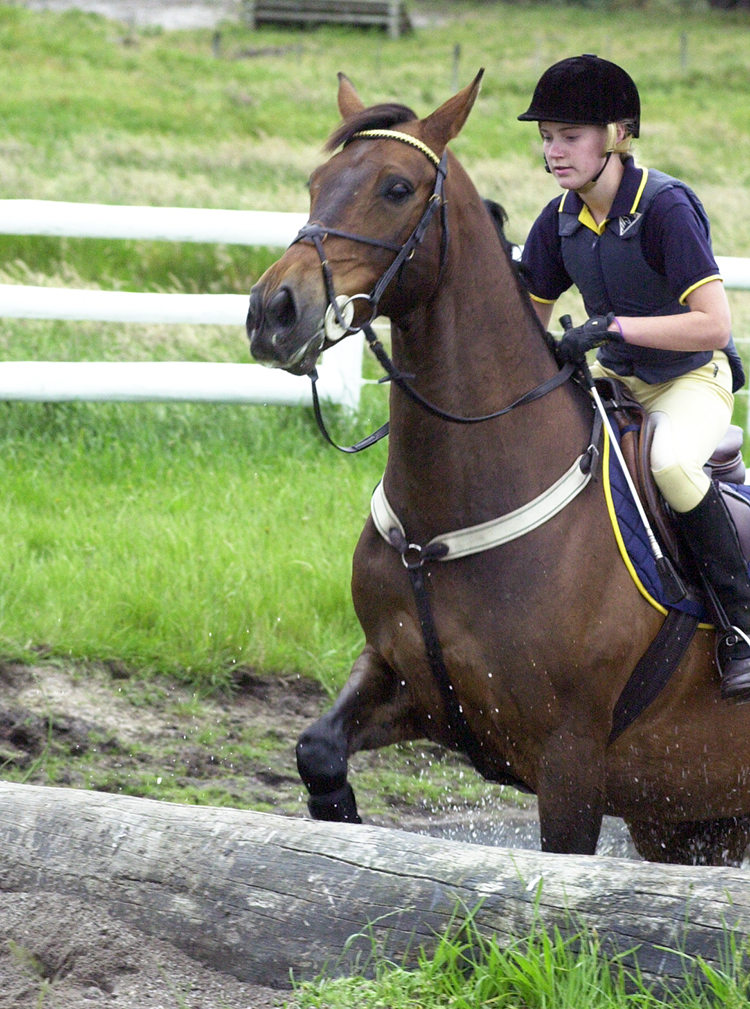
If anything Andy was a bit too brave meeting this challenge:
“I think you should do that again because he jumped into the water slightly too big – showing his green-ness again – and I’d like to think he might have learnt from that and next time jump in, in a more experienced fashion and be more relaxed about it.”
“I’d like you to jump him into the water with slightly less leg, so you don’t encourage him to jump out so fast. Again, not so little leg that he might stop but less leg – saying ‘go on you can do it without me making you do it’. We won’t do that today, because we might be here all day if we do, but that is the way I would be thinking if he was my horse and I was bringing him on as a youngster. They’ve got to learn to be brave without speed.”
Water done, time for one of William’s favourite training fences – the steps.
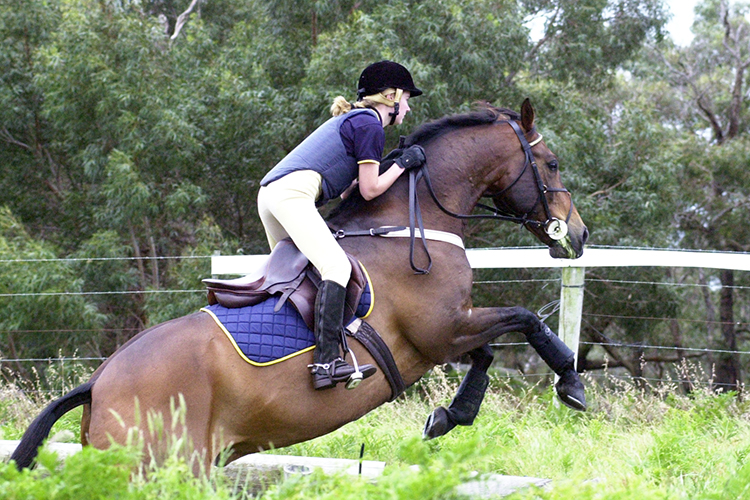
“I do a lot of training with steps, particularly for the young horses because I think it is something they have to learn to do. Some horses do it naturally but I think most have to learn. With some horses, if you don’t teach them from a young age to be handy and nimble up and down steps, then you always have problems with the steps when they start to get bigger, particularly with steps out of water. Steps are a very good way of training them to think for themselves. Very often you see horses at steps take off too early and leave a leg making it more complicated than it should be. A lot of step jumping for young horses – particularly from trot- is something I thoroughly recommend for both horse and rider. It is a very important part of the rider’s training to develop that independent balance and a stronger lower leg – that’s something you can work on going up and down steps.”
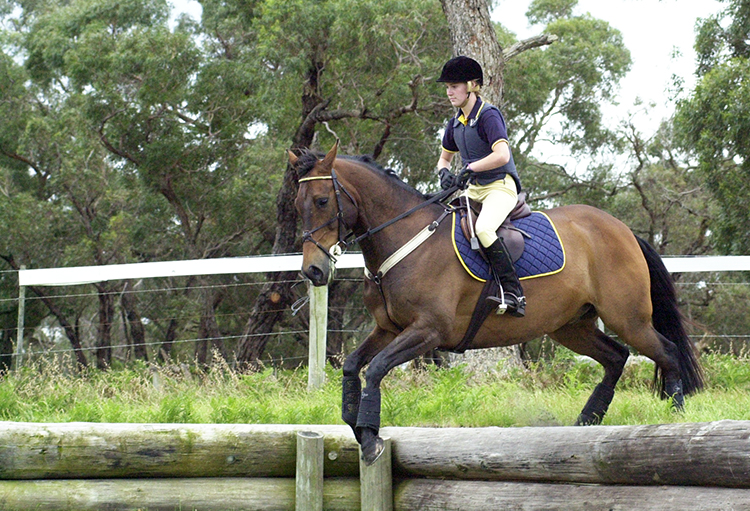
“Just dribble up and down the steps, really let the horse think about jumping up and down.”
After the lesson, time to sum up and plot the course for the future:
“You notice now how the horse’s thinking is much more positive, he is thinking about how he can get over the fence not how he can get round it. Lucy is riding with a lot more confidence and a slightly stronger leg which is certainly suiting this horse and helping his confidence.”
“This horse is perfectly able to compete successfully if he is now handled in the right way- maybe he is not being ridden in a firm enough way. I think Lucy is very kind to him but perhaps a bit too kind, because he is talented. It is just the process that goes on with any combination. Build the horse’s confidence. Build the rider’s confidence – eventually they’ll get there.”
More on William below…
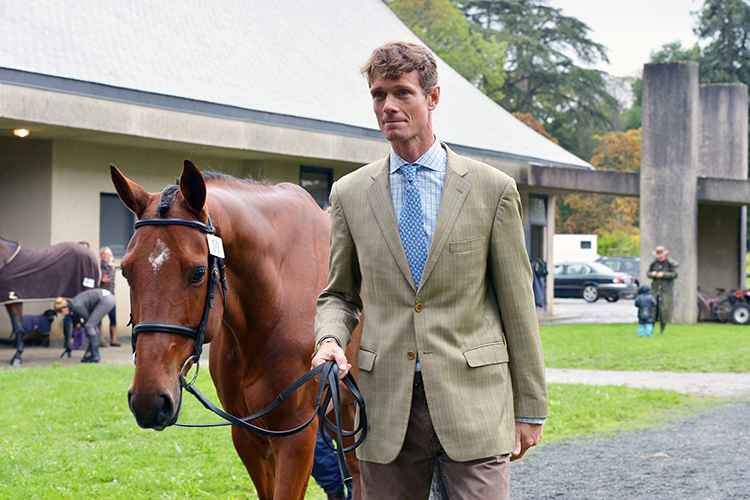 WILLIAM FOX-PITT
WILLIAM FOX-PITT
“My career highlight so far is winning Burghley in 1994 on Chaka. I also won Team Gold at the European championships in 1995, 1997 and 2001. I was the British Open Champion in 1995 and 2000. This year I was leading British rider, and fourth in the World rankings.”
Do you do a lot of teaching?
“I thoroughly enjoy teaching when I’ve got time. Obviously at this stage in my career, my priority is riding. But I enjoy teaching, particularly in the quieter months of the season. I’ve got some students at home who come on a regular basis, but I also do cross country clinics and lecture demonstrations.”
You very quickly analysed where Lucy’s problems were?
“I think it is very important when you are helping a rider that you don’t try and change everything, certainly not in one go and probably not at all because everyone has their own individual style and technique. It is so important to keep your own natural flair for the sport because I believe there has to be an instinct, particularly for cross country riding, that should be developed. What I was doing with Lucy today was more polishing her style a little bit. She is very young but for somebody of her age she has a particularly good style naturally. She is very lucky, a lot of people have to work on their position and they’re riding a lot harder than I think she will have to.”
“It is so important when you have a young jockey with an inexperienced horse to build confidence, and today we saw a slight lack of confidence and the horse taking advantage of his younger rider. There is a lot that can be done, and I think Lucy will have a lot of fun with the horse just by giving him a little more confidence and riding him more positively. One of the most important things I instil into my young horses is that I want them to judge the fences, and I want them to think about what they are doing. But from a young age it is very important that the only time a horse jumps a fence is the first time. At the end of the day, those are the best horses because they are always working out a way of getting over that jump – they are focussing on the fence, and focussing on helping the rider out if needs be.”
“I think if a young horse is allowed to get away with not always being cooperative if he gets into a tricky spot later in life, he’ll look for the door rather than looking to get over the fence. I’m very keen on teaching the horse to always have a go. That’s why I would keep this horse’s training very basic, make steady progress, but really establishing the basics at a low level. I think it is very important to spend the longest part of a horse’s training at the beg inning. He should get lots and lots of mileage when the jumps are small where he can make mistakes and not be worried by it. If all the ground work is achieved over smaller fences and every type of fence is met at a small height, then the height becomes irrelevant later on.”
“Just as I talk about developing the rider’s instinct and style, it is also important that the horse should be allowed to develop his own instinct and element of self-preservation. At the end of the day, the horse must learn to think for itself. That goes back to our work jumping small fences out of the trot, so the horse learns how to find his own feet and to work out what is ahead of him without the rider always doing the work for him. A lot of my work with the young horses is on a relatively long rein encouraging them to really think on their feet. There are occasions when the rider is not in the right place, when the stride isn’t correct, we all make mistakes on the cross country course, and it is important that the horse has developed as much instinct and feeling for self-preservation as possible. If the horse can’t look after himself, then we, as riders, can’t expect him to look after us.”
“It is important that the horse is learning what it is doing. There wasn’t one jump today that the horse did by accident. If you push a horse too fast, then very often the horse will jump the fence, and he might jump it well by luck, but he won’t learn where he jumped it – I think horses do learn by repetition and by doing it right every time.”
This article first appeared in the April 2002 issue of THM.

